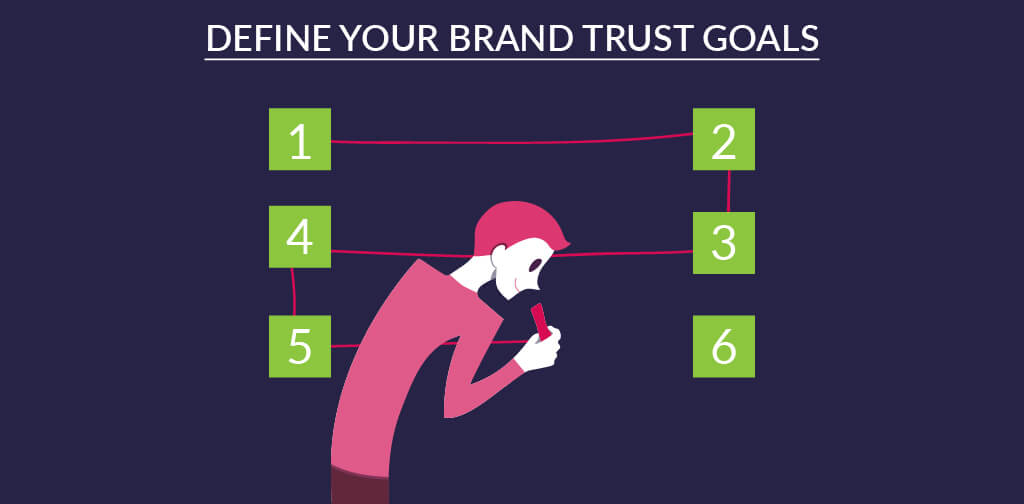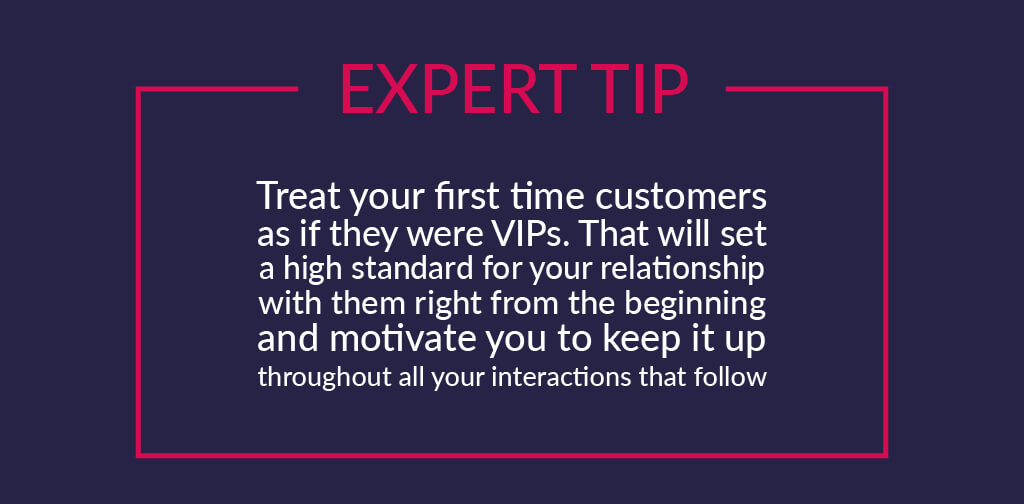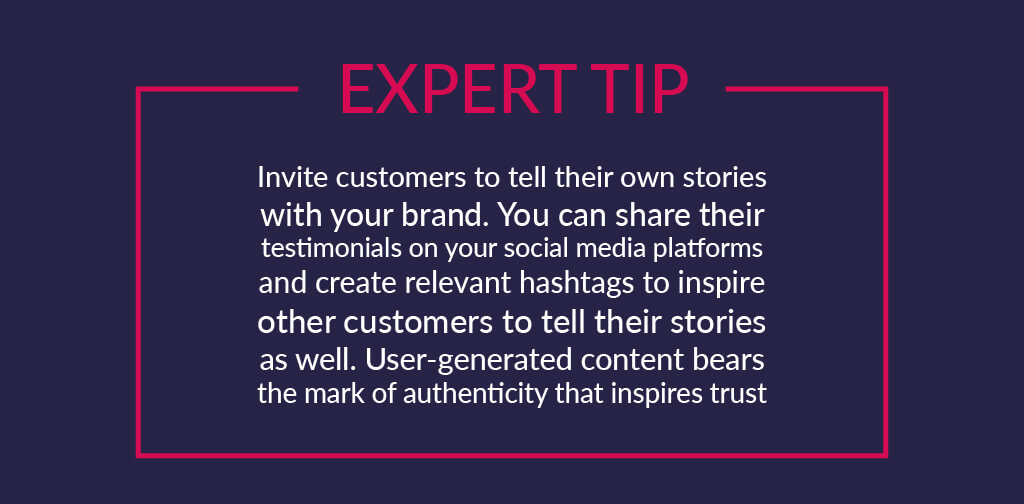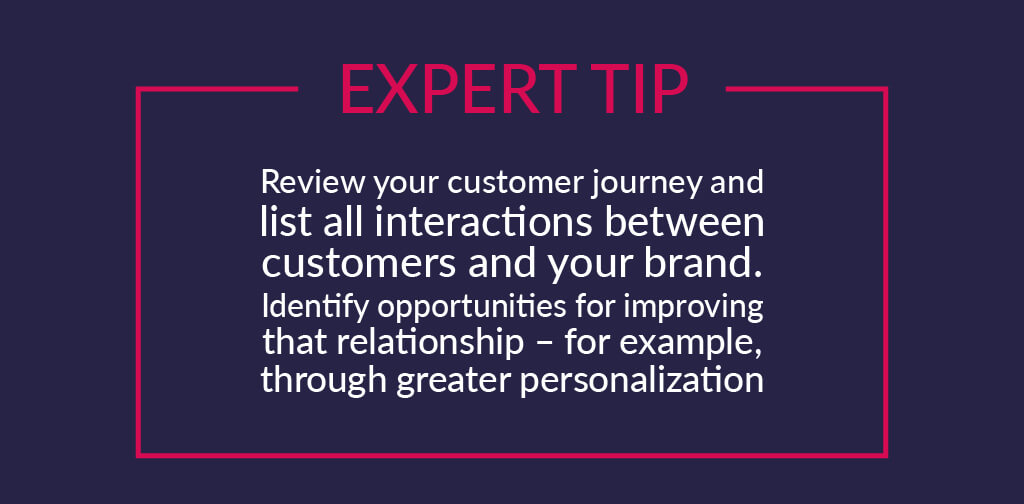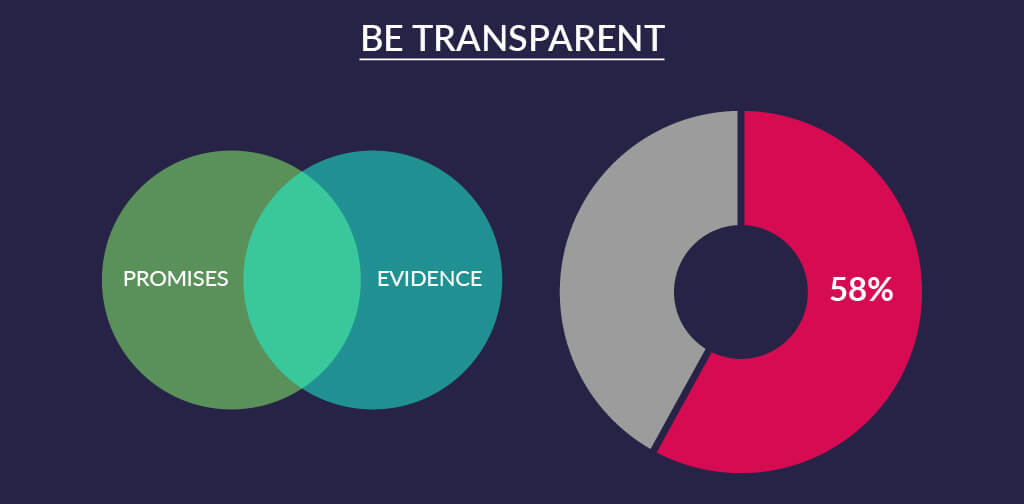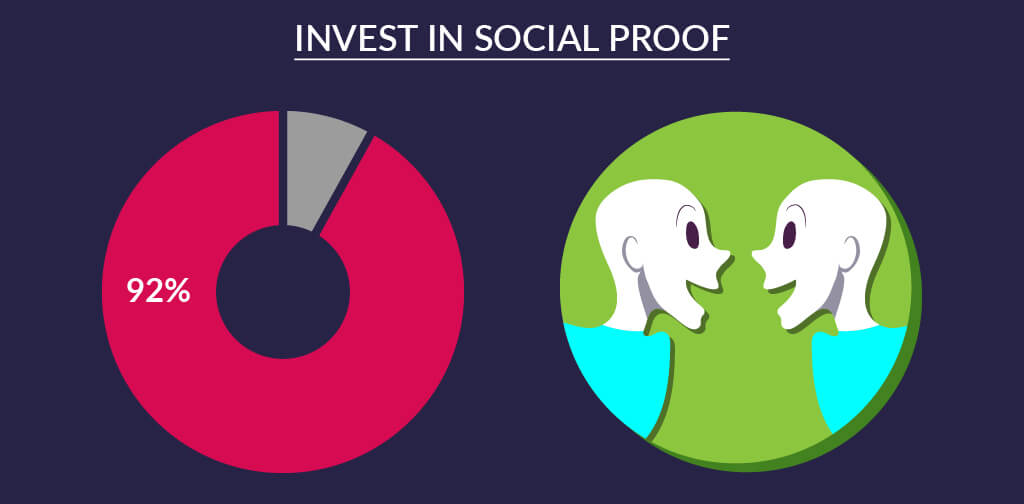
Table of content:
Brands are in trouble. It’s hard to notice the problem among all the success stories we hear about, but we’re actually experiencing a significant consumer trust crisis today.
At least that’s what research tells us. The 2018 Edelman Trust Barometer showed that only 48% of the US population trusts businesses as institutions. That’s a 10 points drop from 2017.
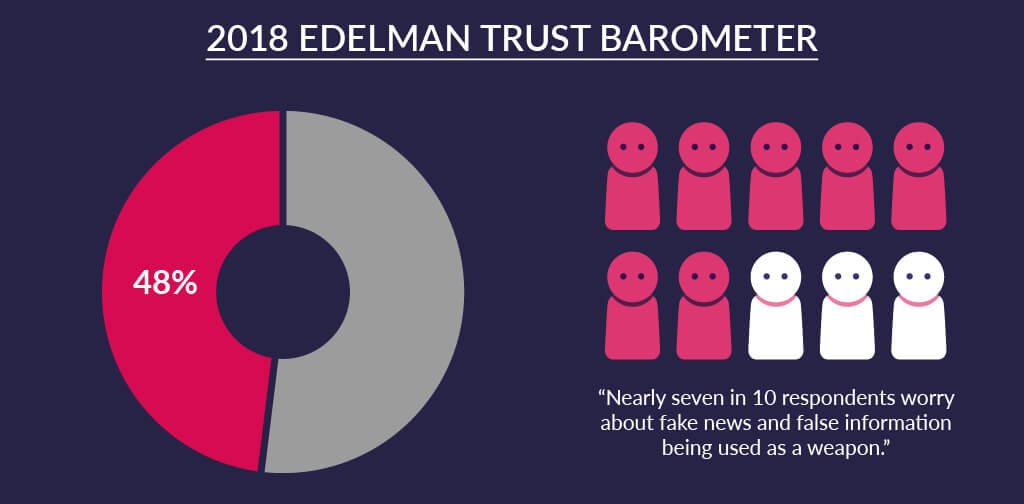
Purchase decision-making accelerates when consumers trust the brand to deliver on its promise. Marketers feel pressure to secure brand trust but doing that is much harder than achieving more tangible and measurable marketing goals. Still, building brand trust is at the center of digital marketing efforts, and there are many things marketers can do to create a solid reputation for their brands.
Read this guide to see seven essential steps that help in building brand trust for companies today.
1. Define your brand trust goals
The first step in every branding strategy is the correct identification of the goals you want to achieve by building trust in your brand.
Do you want to receive fantastic reviews from customers? Perhaps you want customers to recommend your product to friends and family? Or maybe you’re looking for loyal customers to patronize your business?
Start by defining what brand trust means to your company. Then figure out how you will measure your success in securing that trust.
Here are a few things you need to be doing:
- You need to monitor what customers are saying about your brand online. Set up Google Alerts for your brand keywords. You will instantly receive an email from Google when they appear online.
- To check whether your audience trusts your brand, you can look at relevant review sites such as Yelp, Trustpilot, or Google My Business. Search for industry-specific platforms as well.
- Invest in social listening. You can use social listening tools to track mentions and conversations on social media that come with social management tools like HootSuite.
- Get customer feedback directly. You can do that by creating an online survey with tools such as Survey Monkey. Develop a short survey from a template and learn what your customers think. You can carry out a survey to access the general level of customer satisfaction with your service or identify your Net Promoter Score which measures how likely the customer would be to recommend your business to a friend or colleague.
2. Focus on relationships
Companies often fixate on conversions and revenue, failing to put customer relationships first. But concentrating on building a meaningful relationship with your target audience should be your priority in trust-building activities. In fact, it will bring you significant benefits in the long run.
Customers generally feel more loyal to brands that have an in-depth understanding of their needs and preferences. How do these brand achieve that kind of insight? They take the time to understand their customers and make an effort to build relationships with them.
3. Assign the role of a brand trust lead
If you’re convinced that building brand trust the right move for your company, you’ll need to focus some of your team’s energy on that project. That’s why it’s a good idea to assign the role of the brand trust lead to someone who will be responsible for ensuring that your brand goals are executed.
That person will develop a blueprint for how your company builds trust through content, applicable across all your marketing activities and even your customer service. This person will also monitor and evaluate the perceived trust of your brand. They will identify opportunities for growth and lead changes to improve your brand trust continually.
4. Make your brand storytelling authentic
Trustworthiness goes hand-in-hand with authenticity. Consumers are no longer interested in simple sales pitches, and the marketing jargon makes them turn their attention somewhere else. They’re more interested in knowing who you are, what your mission and values are, and how you can help them solve their problem.
Building authenticity in your brand storytelling starts with your company DNA – meaning your values, culture, and goals that are not related to profit. Sharing that DNA in all your communications is the way for achieving authenticity. It’s the origin of your brand’s unique and authentic voice.
So be present and available to your customers. Address complaints promptly, engage with customers online and respond to negative feedback proactively. When you make a mistake, admit it and own it. Customers appreciate it when brands admit their mistakes and address them instantly.
Create authentic marketing stories to engage customers and develop a relationship with them. This is the first step to building trust. Develop a brand narrative that not only promotes your products but tells a story that illustrates your mission.
For example, Nike recently created the video that tells the story of Rory McIlroy as a child looking up to his hero Tiger Woods and then finally meeting him. The only brand-related element we see is a trademark dash and “Just do it” at the end of the video.
5. Be consistent
Customer service is an essential part of every business. However, it’s actually quite challenging to develop a trusting relationship in that area when quickly answering customer questions, troubleshooting problems, or helping the customer pick the right product.
But customer experience is so much more than that. Take a closer look at the customer’s journey throughout the interaction with your brand. You’re doing an excellent job if you’re providing your customers with a unique and personalized experience that demonstrates that you understand their needs.
The better the experience they have, the more likely there they are to trust your brand. Consistent, quality customer experience is an essential factor in purchasing decisions.
6. Be transparent
Transparency is one of the most critical factors in inspiring trust among customers. Research shows that 58% of consumers don’t trust the brand until they see real-world proof that the company delivers on its promises.
Transparency is all about showing your customers the truth behind your products, services, and brand. All you need to do is show that and let customers decide for themselves whether buying from is a good idea. And don’t expect customers to take your word for it.
How you can be transparent depends on your business and industry. For example, in some sectors transparency might mean publishing third-party research about your products. In others, it’s about responding openly to queries in social media or showing how you make your product from scratch. Check out what your competitors are up to and see what kind of reactions they get from their customers.
7. Invest in social proof
According to research from Nielsen, 92% of global consumers trust recommendations from friends and family and word-of-mouth more than any other form of advertising.
This statistic demonstrates the growing distrust in marketing activities. But it also shows that social proof and peer reviews are very important.
Be sure to interact on with industry-related sites a regular basis – that’s where customers talk positively and negatively about your business, and you can respond to them. Sign up to Google Alerts to see brand mentions instantly and respond to them in a timely manner.
Key takeaway
Building brand trust is a complex process that can’t be measured easily. But that doesn’t mean marketers should shy away from it. In fact, research studies we quote in this article show that trust in a brand is more important than ever.
How trustworthy customers find your brand depends on what you say to them, how you say it, and how you prioritize their needs. Owning your mistakes and injecting your personality to every single communication shows that you prioritize relationships over sales. And that’s the kind of brand consumers trust.
Do you have any questions about building trust among customers and how content marketing can help?
Please share your thoughts in the comments; we want to start a conversation about trust to enable marketing teams to deliver better results in the long term.

